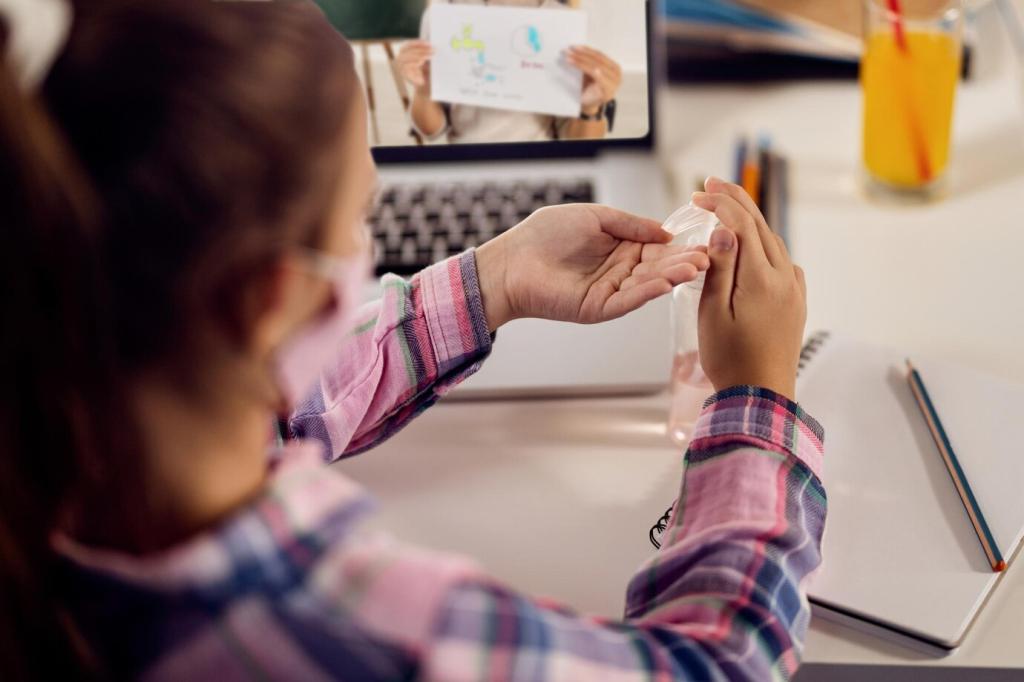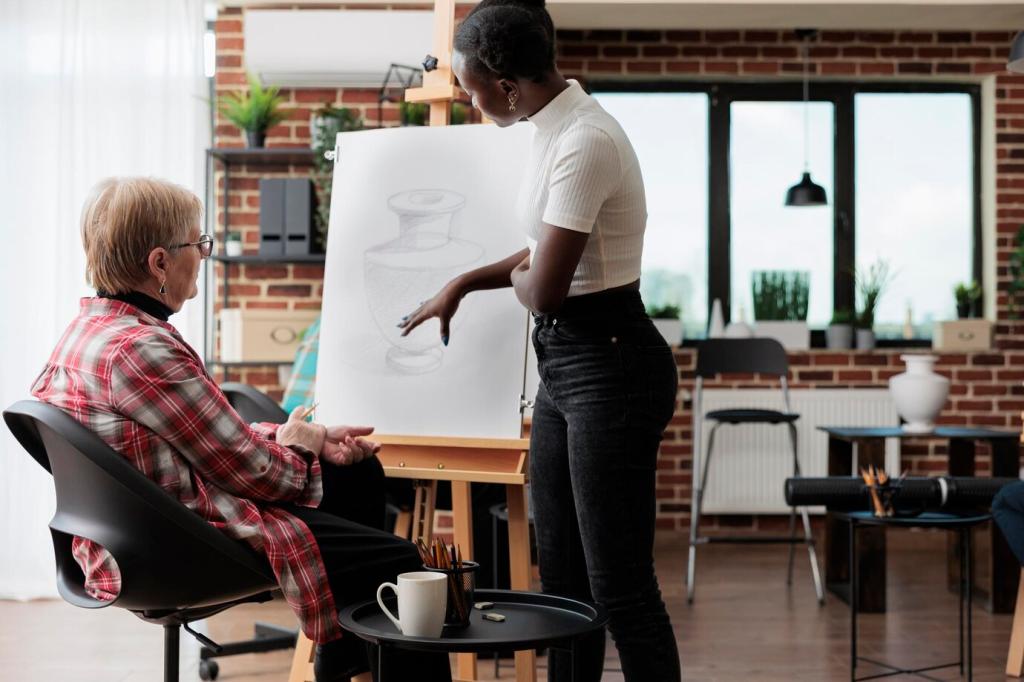Essential Materials to Begin with Confidence
Start with 100% cotton, 140 lb (300 gsm) paper in cold-press for a forgiving texture. It holds water longer, resists overworking, and lets you lift gently when learning. Tape edges to a board to minimize buckling.
Essential Materials to Begin with Confidence
A round brush size 6 or 8, a small round detailer, and a 1-inch flat are versatile workhorses. Synthetic or blend is perfect for beginners, balancing snap, water capacity, and price while you learn control.
Essential Materials to Begin with Confidence
Choose a limited palette of artist-grade primaries: a warm and cool blue, red, and yellow. Pans are tidy and portable; tubes rewet well. Label swatches so you remember how each color behaves.




